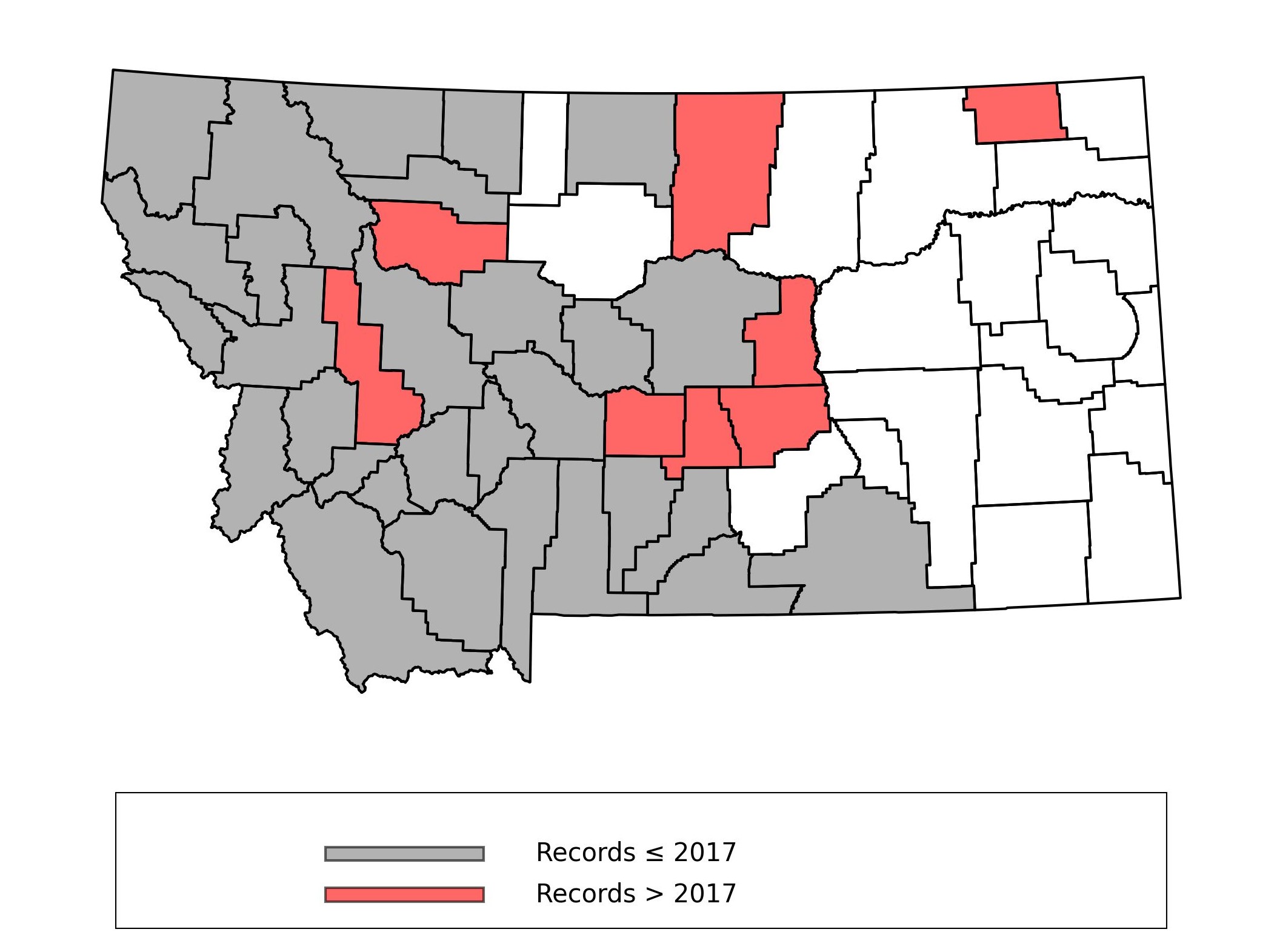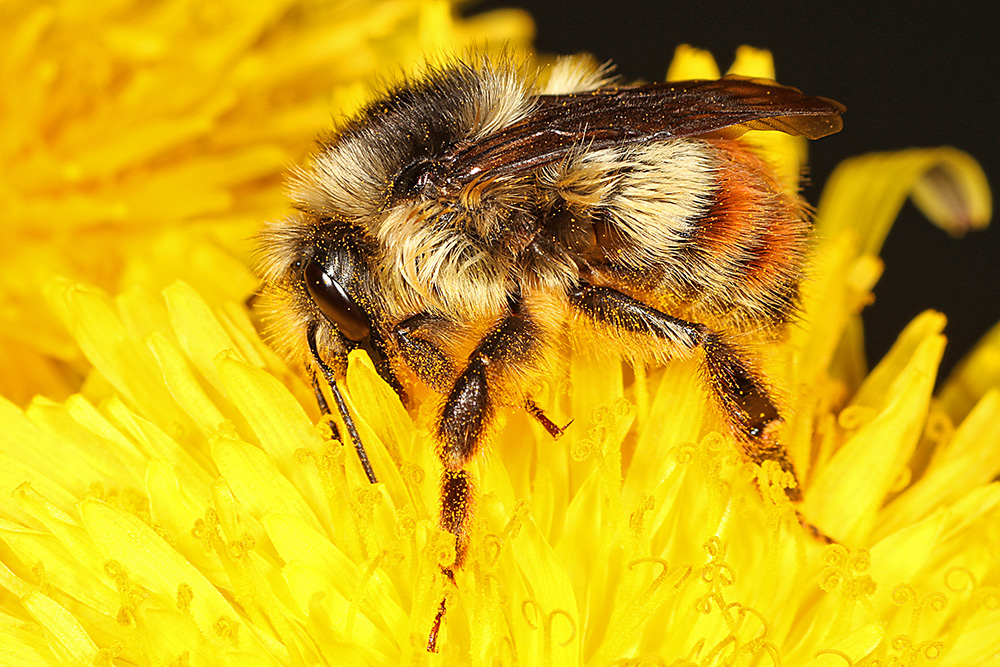Bumble Bees of Montana
Bombus (Pyrobombus) flavifrons Cresson, 1863 Yellow Head Bumble Bee
Bombus flavifrons is considered common across its range, which includes the Rocky Mountain region from southern New Mexico and Arizona north to Alaska and east into northwestern Canada to the Hudson Bay (Williams et al. 2014). It is common in Montana as well, though it has only been collected in the western two-thirds of the state.
Distinguishing between individuals of B. flavifrons and B. centralis in places where the two species occur simultaneously can be difficult. There is variation
in color patterns and often a blending of diagnostic characters that often makes these
two species indistinguishable (Stephen 1957, ACD personal observation 2015). This
is also a case where elevational diversity is associated with noticeable differences
in hair length and texture (Milliron 1971, ACD personal observation 2015), further
complicating identification.
Montana Distribution: Records from Dolan et al. (2017) (gray) with correctionsand additional records added after publication (red).
 |
Photographer: Christopher R. Brown 2015 |
Diagnosis
Bombus flavifrons has a longer-than-wide cheek and a hair pattern of abdominal T1: yellow, T2: yellow, T3: orange, and T4: orange. There are black hairs intermixed with the yellow on thorax in front of the wings, and generally the body hairs are long and uneven.
Similar Species
This species is easily confused with B. centralis. Bombus centralis has few black hairs intermixed with the yellow on the thorax in front of the wings and the body hairs tend to be shorter and more even. Additionally, B. centralis is more commonly collected in the valleys of western Montana and across the plains of eastern Montana, while B. flavifrons is more common in forested mountain areas.
Some individuals of B. centralis and B. flavifrons are nearly impossible to distinguish. We used the amount of black on the thorax in front of the wings and the general length of the body hairs as our main diagnostic characters. If only a few black hairs were mixed with the yellow on the thorax in front of the wings and the body hairs were generally short and even, we identified the specimen as B. centralis. If more than just a few hairs were intermixed on the thorax in front of the wings and the hairs were generally longer and more uneven, we identified the specimen as B. flavifrons. If an individual seemed to fall right in the middle of the B. centralis / B. flavifrons spectrum, we defaulted to an identification of B. flavifrons, based on advice from James Strange at the Bee Biology and Systematics Lab in Logan, UT.
There is a dark form of B. flavifrons in which the orange hairs on T3 and T4 are replaced with black. This form can easily be confused with B. vagans, but has not been observed in Montana. Bombus vagans can be distinguished from this dark form of B. flavifrons by having few or no yellow hairs on the sides of T3 and T4 and on S3-S5, while B. flavifrons would have many yellow hairs laterally on T3 and T4 and on S3-S5.

